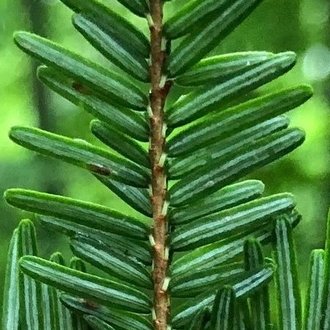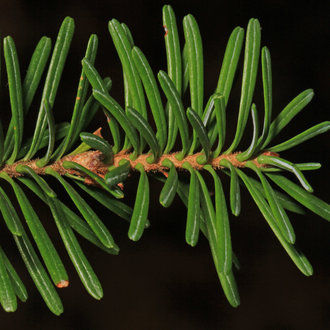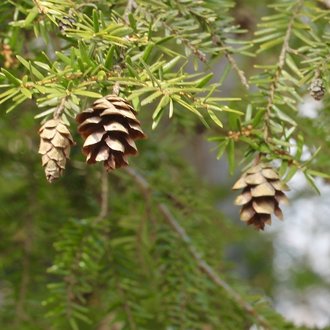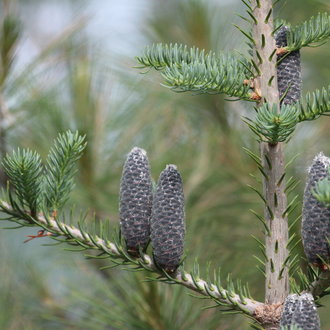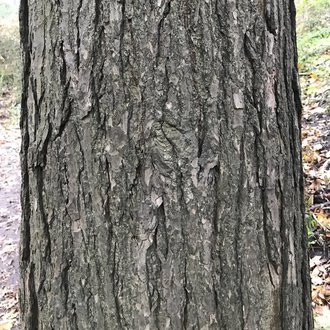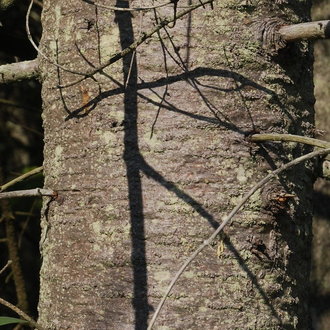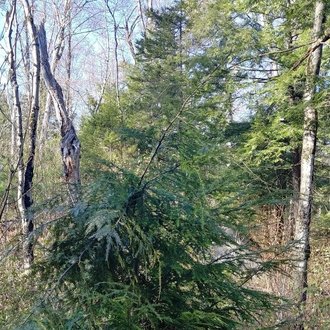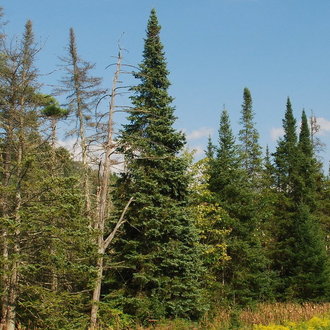Eastern Hemlock vs Balsam Fir
These species are easily distinguished, but are sometimes confused by people inexperienced in conifer identification, especially when comparing hemlocks to firs growing in shade, as the needle arrangement of such firs is flatter along the twig and superficially looks much like hemlock.
Eastern Hemlock (Tsuga canadensis) | Balsam Fir (Abies balsamea) |
A large, shade-tolerant evergreen conifer native to the Appalacians and northeastern U.S. | An evergreen conifer native to North America, and a late-successional species found in areas that have not been disturbed recently. The only fir found in the northeast. |
Needles average shorter, and are attached to twig with a narrow stem attached to a short, woody projection from the stem. Photo © Nova Patch, CC BY-SA 4.0. | Needles average longer, and are attached to twig with a green suction-cup base. Photo © Judy Gallagher, CC BY 4.0. |
Much smaller, dangling cones. Photo © Fluff Berger, CC BY-SA 4.0. | Much larger, upright cones. Photo © Rob Foster, CC BY 4.0. |
Bark of mature trees has long vertical ridges and plates; lacks resin blisters. Photo © Jacob Ke, CC BY 4.0. | Bark smooth and with subtle horizontal lines. Often shows resin blisters, rounded puffed up areas where the bark has been damaged. Photo © Doug Goldman, CC BY 4.0. |
Silhouette looks more feathery, growth habit usually broader and less regular. Foliage tends to droop. Photo © Laura Costello, CC BY 4.0. | Growth habit narrow and neatly conical. Branches ascend and foliage is more erect. Photo © Doug Goldman, CC BY 4.0. |
References & External Resources
These short lists show only links helpful for ID. For a complete list of references and resources also covering other aspects of ecology, visit the links section of the full article on each plant, which is the first entry here.



